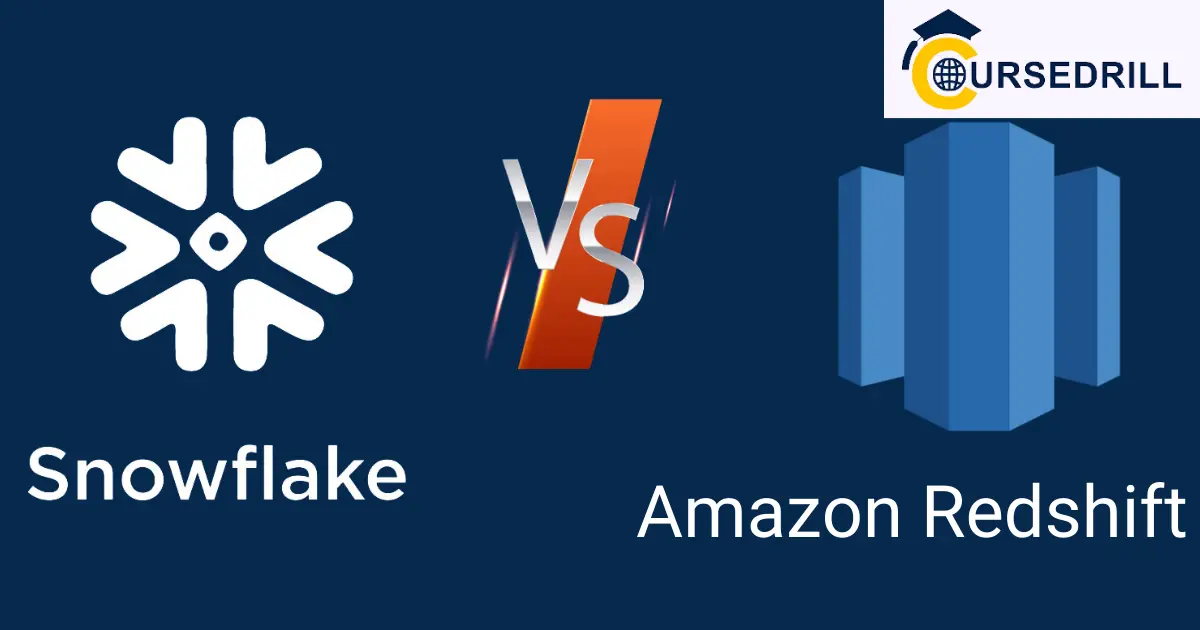- Posted on
- admin
- No Comments
Snowflake vs Redshift: A Comprehensive Comparison
Data warehousing is always changing, with new tools and tech emerging for businesses. Two very popular ones are Snowflake and Redshift. Companies must pick the right one for their needs.
Snowflake is cloud-based and growing in popularity. It lets you store and analyze lots of data without buying costly hardware. Its architecture separates storage and compute. This means you can adjust each resource to fit your needs. Perfect for workloads that change or have unpredictable data growth.
Redshift is powered by AWS. It’s built with a columnar storage system, so queries go faster and more data is compressed. Plus, it works with other AWS services.
The pricing models for Snowflake and Redshift differ. Snowflake uses a pay-for-what-you-use model. It charges based on data processed and concurrency desired. Redshift offers fixed prices, based on cluster size. Good for larger companies or those with stable workloads.
Before choosing, do a PoC to make sure the tool suits your needs and goals. That way, you can get the most out of your pick.
Brief Overview of Snowflake and Redshift
Snowflake and Redshift are two widely-used data warehousing solutions.
Snowflake is cloud-based and provides scalability and integration with various cloud platforms.
Redshift, from Amazon Web Services (AWS), is known for its performance and cost-efficiency.
Snowflake’s architecture separates storage and compute resources, allowing users to scale individually. This makes it easy to optimize costs and handle varying workloads. It also eliminates concurrency bottlenecks found in traditional warehouses.
Redshift uses columnar storage and parallel processing to provide fast query performance, even with large datasets. It integrates with AWS to connect to services such as S3 and Glue. Plus, Redshift’s Spectrum permits queries to be executed directly from S3.
Snowflake and Redshift support analytics functions and SQL compatibility when examining the tools’ features. Snowflake, however, stands out due to its ability to handle semi-structured data, which makes it a great choice for organizations with diverse data sources.
Are you aspiring to become a Snowflake developer by learning in-demand skills?
Then, Checkout our project-oriented, real-time Snowflake Training here.Comparison of Features and Capabilities
|
Feature |
Snowflake |
Redshift |
|
Scalability |
Elastic scaling |
Limited scaling |
|
Performance |
High-speed querying |
Slightly slower |
|
Ease of Use |
User-friendly interface |
Complex setup |
|
Concurrency |
Built-in multi-cluster shared |
Single-cluster bottleneck |
|
Pricing Model |
Pay-as-you-go |
Hourly pricing |
|
Integration |
Seamless integrations |
Strong integration |
|
Security |
Granular access control |
Robust security |
Snowflake offers unique features:
- Immediate access to data
- Zero-copy cloning
- Automatic scalability
Redshift provides parallel loading for faster data ingestion.
Pro Tip: Consider your organization’s needs before choosing between Snowflake and Redshift. Evaluate factors like budget, workload type, and integration needs to make an informed decision.
Use Cases for Snowflake
Snowflake – a powerful data warehousing tool – has many unique scenarios where it stands out from its competitors. Let’s see some of them.
Use Cases for Snowflake:
Look at this table to get an idea of the different applications of Snowflake:
|
Use Case |
Description |
|
E-commerce |
Snowflake can help analyse customer behaviour. This gives personalised experiences and targeted marketing campaigns. |
|
Finance |
Financial institutions can use Snowflake for risk analysis, fraud detection, and compliance. |
|
Healthcare |
Healthcare organizations can manage patient data securely and do advanced analytics. |
|
Media |
Content creators can process large volumes of data in real time. This helps with content recommendations and audience engagement. |
Plus, Snowflake is useful in other domains, such as supply chain management, telecommunications, and gaming. Its flexibility and scalability make it so popular.
To get the most out of Snowflake in any use case:
- Optimise Query Performance: Tweak query design and structure to use Snowflake’s parallel processing capabilities well. This makes insights faster and improves performance.
- Leverage Data Sharing: Easily share live data sets with external partners or different departments. This strengthens relationships and helps decision-making.
- Implement Automated Warehousing: Use features like time travel and zero-copy cloning to automate data warehousing processes. This reduces manual effort and ensures consistent data availability.
By following these suggestions, businesses can use Snowflake for specific use cases. This unlocks value from their data assets.
Use Cases for Redshift
Redshift is an efficient and powerful data warehousing tool with an extensive range of applications across industries. Let’s look at some of its use cases!
For example, Business Analytics. Redshift helps businesses analyze large volumes of data to gain insights and make informed decisions. It also enables real-time reporting, allowing quick decision-making and improved operational efficiency.
Furthermore, it allows companies to segment customers based on demographics, behaviour, and purchase history. Plus, marketing teams can use Redshift to analyze the performance of their ad campaigns by quickly and efficiently processing large volumes of data.
Redshift is also used for inventory management, pricing optimization, and demand forecasting in the retail sector. Its scalability and cost-effectiveness make it a popular choice among e-commerce companies.
Fun Fact: According to the AWS Redshift documentation, Redshift delivers fast query performance even when dealing with petabyte-scale datasets.
Factors to consider when selecting a Data Warehousing tool
When selecting a data warehousing tool, there are multiple factors to consider. These include scalability, performance, cost, ease of use and integration capabilities. Evaluating each aspect carefully is essential to ensure the chosen tool meets the needs of the organization.
Let’s take a closer look at the factors:
|
Factors |
Snowflake |
Redshift |
|
Scalability |
Automatic scaling |
Manual scaling |
|
Performance |
Near-instant query response |
Faster query execution |
|
Cost |
Pay-as-you-go |
Traditional pricing |
|
Ease of Use |
User-friendly interface |
Steeper learning curve |
|
Integration Capabilities |
Supports multiple data sources |
Tight integration with AWS ecosystem |
Considering unique details is also important. For example, Snowflake has multi-cluster shared data architecture. This allows for data sharing across numerous compute resources, while maintaining strict data isolation and security protocols.
Pro Tip: Before selecting a data warehousing tool, assess your business requirements. Consider conducting a pilot project or proof-of-concept test with multiple tools. This will assist you in identifying the tool that aligns most effectively with your organization’s requirements and maximizes its potential for success.
FAQs about Snowflake vs Redshift
Certainly, we would be happy to help you go through some FAQs about Snowflake vs Redshift!
What is Snowflake?
Snowflake is a cloud-based data warehousing tool that allows organizations to store, analyze, and process large volumes of structured and semi-structured data.
What is Redshift?
Redshift is an Amazon Web Services (AWS) data warehousing solution that provides fast, scalable, and cost-effective data storage and analytics capabilities.
How does Snowflake compare to Redshift?
Snowflake and Redshift have similar functionalities but differ in some key aspects. Snowflake is a multi-cloud data warehouse, whereas Redshift is limited to AWS. Snowflake also uses a unique architecture that separates compute and storage, allowing for better scalability and performance.
Which tool is better for large-scale data processing?
Snowflake is known for its ability to handle large-scale data processing due to its cloud-native design. It can seamlessly process and analyze massive amounts of data without compromising performance.
How does pricing differ between Snowflake and Redshift?
Snowflake offers a pay-as-you-go pricing model, allowing businesses to only pay for the resources they use. Redshift also offers flexible pricing options, but it is tied to AWS services and may require more upfront investment for certain configurations.
Which tool should I choose for my organization?
The choice between Snowflake and Redshift depends on your specific requirements and priorities. Snowflake is often favored for its scalability and multi-cloud capabilities, while Redshift may be more suitable if you are already using AWS extensively.
Conclusion
Snowflake and Redshift are two leaders in the data warehousing realm. Each has its pros and cons. Snowflake is amazing for its architecture and scalability. It can be easily scaled up or down to fit workload needs. Plus, its data-sharing features make collaboration a breeze. Redshift is great for speed and cost-efficiency. It has lightning-fast query performance and integrates with AWS services. As for pricing, it offers options to suit a variety of budgets.
When choosing between Snowflake and Redshift, consider your organization’s needs and priorities. Assess each tool’s features and capabilities. This will help you make the right decision for your business.
You can also check out our frequently asked Snowflake interview questions and Snowflake tutorial here.
Who can learn Snowflake?
The following professionals have the opportunity to progress in their careers by learning Snowflake dba training:
- Data Analysts
- Data Engineers
- Data Scientists
- Database Architects
- IT professionals and Freshers who wish to build their career in advanced data warehouse tools.
What are the Prerequisites to learn Snowflake?
There are no mandatory prerequisites for learning Snowflake, but having basic knowledge or experience in the data warehouse and SQL is an added advantage.
Popular Courses



